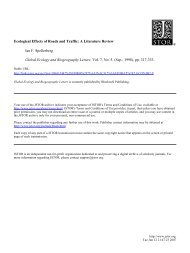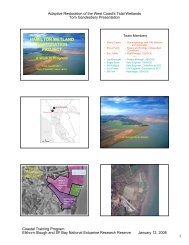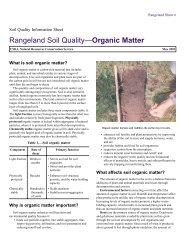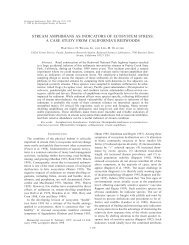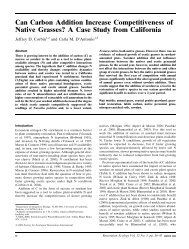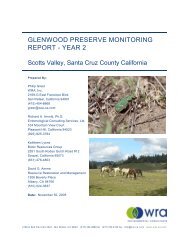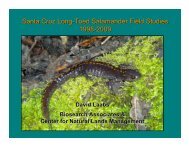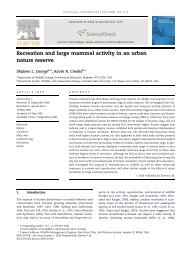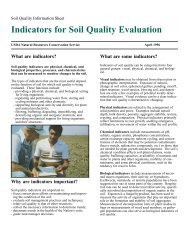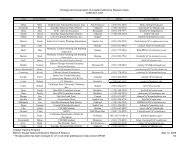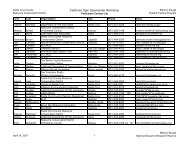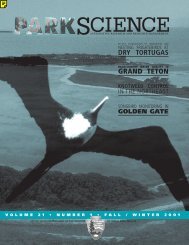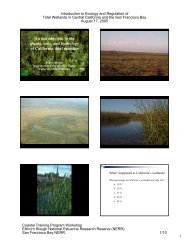BIRD POPULATIONS - Birdpop.org
BIRD POPULATIONS - Birdpop.org
BIRD POPULATIONS - Birdpop.org
- No tags were found...
You also want an ePaper? Increase the reach of your titles
YUMPU automatically turns print PDFs into web optimized ePapers that Google loves.
DISTRIBUTION AND ABUNDANCE OF BURROWING OWLS IN CALIFORNIATABLE 1. Regions of California defined and surveyed for The Institute for Bird Populations’ CaliforniaBurrowing Owl surveys during 1991-1993 and/or 2006-2007.RegionRegions surveyed during the 1991-1993 surveyNorthern Central ValleyMiddle Central ValleySouthern Central ValleySan Francisco Bay Area InteriorSan Francisco Bay Area CoastCentral-western InteriorCentral-western CoastSouthwestern CoastSouthwestern InteriorCoachella ValleyImperial ValleyRegions not previously surveyedModoc Plateau/Great BasinNorthern Mojave Desert/Eastern Sierra NevadaWestern Mojave DesertEastern Mojave DesertSonoran DesertStatus during 2006-2007 surveyResurveyedResurveyedResurveyedResurveyedNot resurveyed – population extirpatedResurveyedNot resurveyed – population likely extirpatedNot resurveyed – small, well-known populationResurveyedResurveyedResurveyedSurveyed for the first timeSurveyed for the first timeSurveyed for the first timeSurveyed for the first timeSurveyed for the first timecontained an additional 4,991 blocks. Afterremoving those regions from the 1991-1993survey we decided not to survey, our samplingframe contained a total of 9,823 blocks.Random sample blocks were selectedseparately by region and elevation stratum. Theselected number of blocks to be visited in eachsubregion was proportional to its size andamount of estimated surveyor effort availableover the two-year survey period. BecauseBurrowing Owls are known to be more abundantin the lower elevation strata throughout oursample area (DeSante et al. 2007), low elevationblocks comprised 2/3 of the random sampleselected to be visited while high elevationsubstrata blocks comprised 1/3 of selectedrandom sample blocks in all survey regions.We also identified additional blocks (hereafter,“historic breeding blocks”) where BurrowingOwls were known to have been detected duringthe breeding season in any year since 1981.Historic breeding blocks were identified byquerying or consulting the following sources forhistorical detections: the database compiled byDeSante et al. (2007), which includes BurrowingOwls detected during the 1991-1993 survey aswell as historical detections gathered frommultiple sources from the decade prior to thatsurvey; the California Natural DiversityDatabase (CNDDB; California Dept. Fish andGame 2006); and knowledgeable researchers andbirders with local expertise throughout the state.Based on previous knowledge from the 1991-1993 survey, we estimated that it was feasible tovisit approximately 670 blocks in the eightregions being resurveyed, and 230 blocks in thefive new survey regions, for a total of 900 blocks.Prior to the 2006 field season, we identified 500historic breeding blocks (459 historic breedingblocks in the eight regions surveyed in 1991-1993 and 41 historic breeding blocks in the fivenew survey regions); a few additional historicblocks were identified during the course of ourtwo-year survey. We also selected 520 randomblocks to be surveyed: 340 in regions scheduledto be resurveyed and 180 in the new regions, ofwhich 47 also happened to be historic breedingblocks in which Burrowing Owls had beendetected during the 1991-1993 survey. The totalnumber of blocks drawn for surveying during2006-2007 was 973 (slightly more than wethought we could survey, in case some selectedblocks proved to be inaccessible or we were ableto sample more blocks than we anticipated).All selected blocks were assigned to arandomly generated order. In each subregion,half of all blocks in each elevation stratum andeach category (random or historic) were[5]



